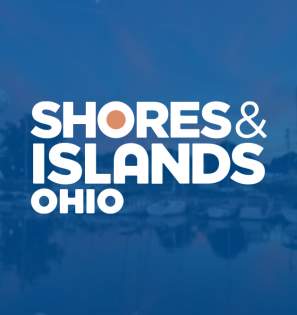Part of our Time Traveler Series
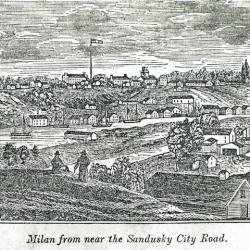 On June 29, 1956, President Eisenhower signed a bill establishing the interstate highway system. But before modern-day interstate systems, natural features such as rivers, along with man-made waterways, acted as main transportation routes. Cities and towns were once connected via dirt, gravel, and corduroy (plank) roads, then later by railways.
On June 29, 1956, President Eisenhower signed a bill establishing the interstate highway system. But before modern-day interstate systems, natural features such as rivers, along with man-made waterways, acted as main transportation routes. Cities and towns were once connected via dirt, gravel, and corduroy (plank) roads, then later by railways.
Ohio became a state in 1803. Early settlers into Ohio arrived via major waterways, such as Lake Erie and rivers like the Ohio River. Once folks arrived to waterfront communities, they needed an easy way to travel outbound. Some of the larger cities had primitive roads that provided paths to desired destinations, but these roads were dirty and slow-moving.
The Ohio and Erie Canal, also known as “the big ditch” was an idea hatched to improve transportation routes; offering a better way to connect Lake Erie, in the north with the Ohio River, in the south. These two bodies of water provided vital opportunities to expand the ability to receive and send goods from all over the world as Lake Erie connects to the Atlantic Ocean via several waterways and the Ohio River connects to the Mississippi River, which connects to the Gulf of Mexico, through to the Atlantic Ocean.
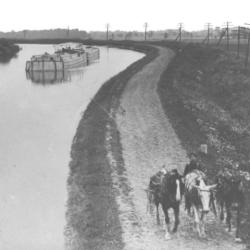 Mostly hand-dug by German and Irish immigrants, this four-foot-deep, man-made waterway greatly improved transportation in Ohio. Construction on “the big ditch” began in 1825 and was completed in 1832. Previously taking several weeks, once finished, the entire trip from Cleveland to Cincinnati was said to take only 80 hours via the canal. Because water travel was quicker, farmers found it to be more economical as they were now able to ship their merchandise with less waste.
Mostly hand-dug by German and Irish immigrants, this four-foot-deep, man-made waterway greatly improved transportation in Ohio. Construction on “the big ditch” began in 1825 and was completed in 1832. Previously taking several weeks, once finished, the entire trip from Cleveland to Cincinnati was said to take only 80 hours via the canal. Because water travel was quicker, farmers found it to be more economical as they were now able to ship their merchandise with less waste.
Locally, Milan Ohio, better known as the birthplace of inventor Thomas A. Edison, has their own canal story to tell. Founded in 1817 as Beatty, Milan is located near the Huron River and roughly 15 miles south of Sandusky Bay. Sandusky Bay, historically, was a major shipping and receiving port opening up to Lake Erie. Creating access to Lake Erie was paramount to the economy of any village or town. Once a ship was on Lake Erie, merchandise could be sent to a number of outlets via the Erie Canal (PA and NY) and out to the Atlantic Ocean, making its way to the rest of the world’s markets.
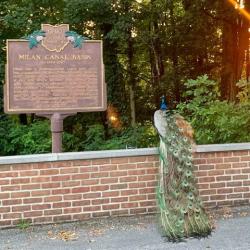 Construction on the Milan Canal began in 1833 to connect Milan to the Huron River. By 1849, the canal opened to Lake Erie navigation. The next 15 years saw Milan as one of the most prosperous ports on the Great Lakes. Because of the Milan Canal’s location on the Huron River, which fed into Sandusky Bay eventually connecting to the New York City market, Milan became the 2nd largest grain exporter in the world, selling commodities valued at two million dollars in 1847 alone.
Construction on the Milan Canal began in 1833 to connect Milan to the Huron River. By 1849, the canal opened to Lake Erie navigation. The next 15 years saw Milan as one of the most prosperous ports on the Great Lakes. Because of the Milan Canal’s location on the Huron River, which fed into Sandusky Bay eventually connecting to the New York City market, Milan became the 2nd largest grain exporter in the world, selling commodities valued at two million dollars in 1847 alone.
Another advantage of the Milan Canal was that it was deeper than the standard four-foot-deep canals. This, along with the abundance of white oak timber growing in the area, enabled Milan to become a ship building center. Between 1840-1867, over 60 schooners were built in the village and sent north to Lake Erie via the Milan Canal.
The Ohio and Erie Canal, and its counterparts such as the Milan Canal, dominated Ohio transportation routes until the 1850s when the “iron horse” was introduced. Train travel quickly replaced the now antiquated water routes. More on area rail transportation in a future blog!
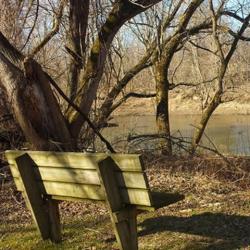 A flood in 1868 wiped out the Milan Canal’s feeder dam resulting in the demise of the Milan Canal. The great flood of 1913 put a final period on the entire Ohio and Erie Canal system when the remaining routes were obliterated. Any canal-user hold-outs switched to rail travel at this time.
A flood in 1868 wiped out the Milan Canal’s feeder dam resulting in the demise of the Milan Canal. The great flood of 1913 put a final period on the entire Ohio and Erie Canal system when the remaining routes were obliterated. Any canal-user hold-outs switched to rail travel at this time.
Faint remnants of the Milan Canal can be seen to the north of the Village of Milan’s Town Square. Erie MetroParks operates Milan Towpath MetroPark, a .9-mile trail that follows a bit of the Milan Canal’s towpath. Also still standing in the Milan Canal basin is the canal-era Jenkins Warehouse, built in 1847. This wood-frame building, which has been vacant for years, is currently being explored for renovation through the efforts of the Village of Milan Council and local activists and historians.
Milan Museum and Erie County Historical Society has more information on Milan history and the Milan Canal era.
*Historical photos provided by Milan Museum and Erie County Historical Society



